Don't wanna be here? Send us removal request.
Text
Master Finite Element Analysis with Expert Training at PIGSO LEARNING

Looking to boost your skills in Finite Element Analysis (FEA)? Enroll in the comprehensive FEA Training Course by PIGSO LEARNING. Designed for engineers, students, and professionals, this course covers essential FEA concepts, tools, and applications used in industries worldwide. Learn from experienced instructors and gain hands-on experience with industry-standard software.
Enroll Now - https://pigsolearning.com/fea-training-course/
0 notes
Text
Learn Multiphase Flow Simulation with ANSYS Fluent CFD
Multiphase flows are key in industries like oil & gas and chemical processing

Multiphase flows are key in industries like oil & gas and chemical processing. ANSYS Fluent CFD helps engineers simulate complex systems, reduce costs, and boost efficiency.
Join the ANSYS Fluent CFD Online Course by PIGSO LEARNING to gain hands-on skills, real-world project experience, and industry-ready knowledge.
👉 Enrol now and start your CFD journey - https://pigsolearning.com/ansys-fluent-cfd-course/
0 notes
Text
Master Abaqus Concrete Damage Plasticity
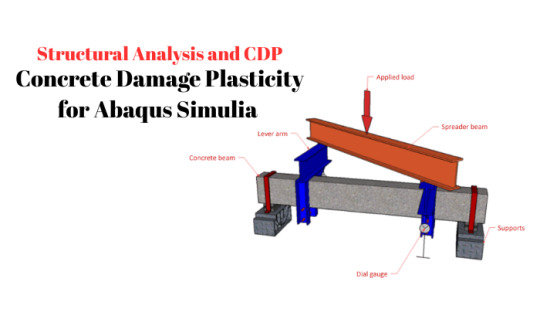
Unlock the power of Concrete Damage Plasticity (CDP) in Abaqus to simulate real-world concrete behavior — cracking, crushing, and failure under load. Whether you're working on beams, slabs, or masonry walls, CDP helps you design safer and more accurate structures.
Read More: https://michelwatt.blogspot.com/2025/05/abaqusconcretedamageplasticity.html
0 notes
Text
🌊 Master CFD with ANSYS Fluent – Live Online Training!



Want to build a strong career in Computational Fluid Dynamics? Join Pigso Learning’s ANSYS Fluent CFD Training Program and learn to simulate real-world fluid flow and heat transfer problems using top tools like Ansys Fluent, SpaceClaim, and Tecplot.
🔗 Start Your Journey Now:
Ansys Fluent CFD Online Training Course
With CFD Experts, get hands-on live training on the Ansys Fluent CFD Online Course, along with Ansys SpaceClaim and CFX softwares.
📚 What You’ll Learn:
CFD fundamentals & fluid flow simulation
Geometry creation & meshing
Solver setup, result analysis & optimization
Hands-on capstone project for real experience
🎓 Learn from expert instructors, get personalized support, and earn an industry-recognized certificate. Ideal for mechanical, aerospace, automotive engineers, and students aiming to upskill.
0 notes
Text
Explore Altair HyperMesh with Pigso Learning!
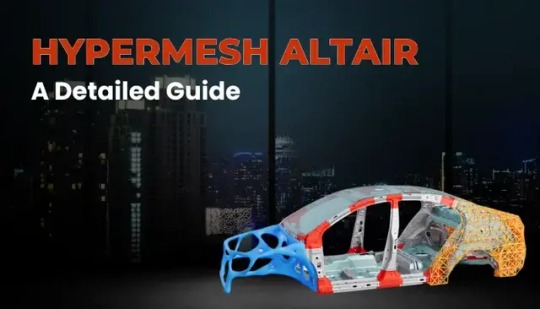
Dive into the world of advanced FEA pre-processing. Learn how HyperMesh enhances simulation accuracy across industries like automotive, aerospace, and biomedical engineering. Master meshing, geometry cleanup, and solver integration with expert insights. 👉 Read more: https://pigsolearning.com/blog/hypermesh-altair/
0 notes
Text
Ansys Fluent CFD Online Training Course

Enhance your Computational Fluid Dynamics (CFD) skills with PIGSO Learning's comprehensive Ansys Fluent CFD Online Course. Designed for students, researchers, and professionals, this live training program offers hands-on experience with Ansys Fluent, Workbench, and SpaceClaim, covering simulation workflows and real-world engineering problems.
Course Highlights:
30+ hours of live instruction by CFD experts with over 6 years of experience
4 project assignments, including a capstone project
Certification upon completion
Access to a video library for one year
1:1 mentorship and live doubt-solving sessions
Networking opportunities with peers and professionals
Join a global community of learners and advance your CFD expertise with PIGSO Learning. For more information and to enroll, visit the Ansys Fluent CFD Online Course page.
0 notes
Text
Master CFD with Industry Experts – Live Hands-On Training!
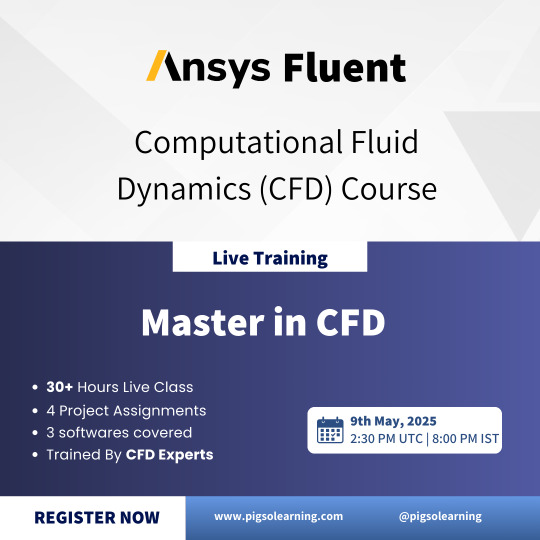
We cover everything from geometry creation in SpaceClaim, seamless integration in Workbench, advanced flow simulation in Fluent, and insightful post-processing with Tecplot.
🚀 Hands-on projects and real-world assignments ensure you don’t just learn theory but apply skills immediately.
🎯 Perfect for engineers, students, and professionals aiming to boost their CFD expertise and career.
Secure your seat today and transform your simulation skills!
#AnsysFluent #CFDTraining #SpaceClaim #Workbench #Tecplot #Engineering #Simulation #CFD
0 notes
Text
Learn industry-relevant 3D design with our SolidWorks training course online.
This SolidWorks course online offers hands-on practice, real-world simulations, and expert-led sessions to help you master CAD skills. Whether you're a student or a working professional, our SolidWorks classes online are flexible and certificate-based—perfect for career growth in product design and engineering.

0 notes
Text
Top Geotechnical Software Tools You Should Know
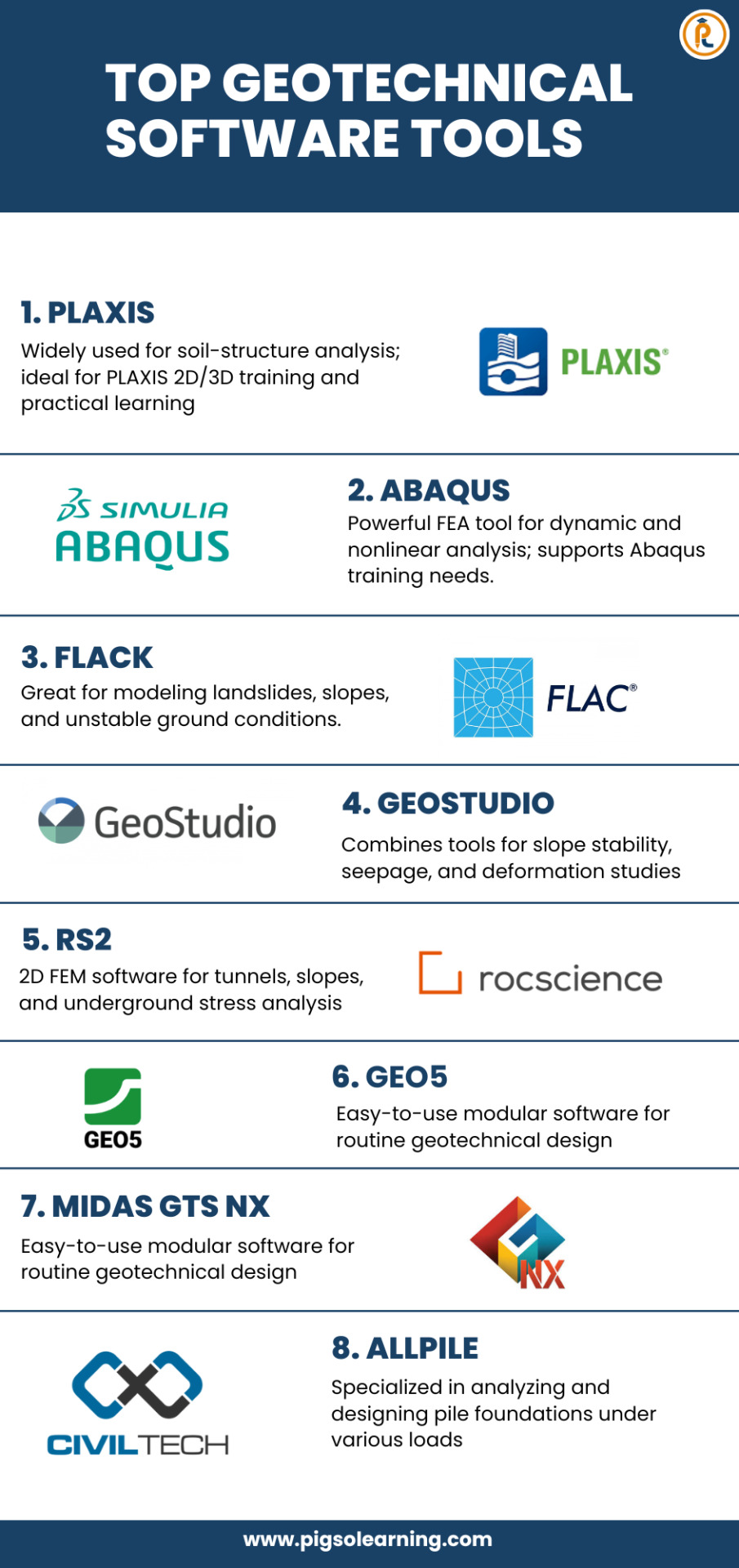
In geotechnical engineering, the right software makes all the difference. These tools help engineers analyze soil, tunnels, slopes, and foundations with better accuracy and speed.
Our latest infographic covers the most popular tools used today — including PLAXIS, ABAQUS, FLAC, and more.
Whether you're a student, researcher, or professional, mastering these tools can boost your skills and open new career opportunities.
✅ Learn more in our latest blog: 👉 Finite Element Analysis in Geotechnical Engineering
0 notes
Text

Top Geotechnical Software Tools You Should Know
In geotechnical engineering, using the right software is very important. These tools help engineers analyze soil, tunnels, slopes, and foundations more accurately and quickly. This infographic shows some of the top geotechnical software tools used today, like PLAXIS, ABAQUS, FLAC, and more.
If you're a student, researcher, or working professional, learning how to use these tools can improve your skills and open up new opportunities. Visit PIGSO LEARNING to explore expert-led courses and industry-relevant resources.
📘 Learn With Us:
Join our PLAXIS 2D/3D Training Course Online to understand soil-structure interaction and real-world analysis.
Take our Abaqus Training Course Online to learn advanced simulations and FEA methods.
Read our blog to learn more: Finite Element Analysis in Geotechnical Engineering
0 notes
Text
Understanding CAD Modeling Approaches in SolidWorks: Cross-Section vs. Features

When it comes to creating parts in CAD software like SolidWorks, designers often dive straight into modeling without giving enough thought to the best way to approach the task. However, planning and strategising before creating a CAD model can lead to faster creation, easier editing, and better alignment with manufacturing processes. In SolidWorks training online, the words “model” and “part” are used interchangeably.
Key Factors for a Good Modeling Plan
A modeling plan is considered effective when it meets the following:
Fastest time to create the part
Ease of editing the part later
Alignment with how the part will be manufactured
These strategies are deeply discussed in any professional SolidWorks online course, helping learners build the right mindset from day one.

Two common approaches are used in modeling: the cross-section approach and the features approach.
Cross-Section vs. Features Approach
Cross-Section Approach: This is generally quicker. You sketch the entire part profile and extrude it in one go. However, it might be harder to edit later if changes are needed.
Features Approach: This method builds the part step by step, like creating a block, chamfer, and hole. It mirrors how a machinist would make the part in real life, starting from a block and then working step-by-step. While it may take longer initially, it’s more modular and easier to modify.
Many SolidWorks online classes explain both these approaches in depth with examples. Whether you're attending SolidWorks training online or self-learning through videos, understanding both styles is a must.
For example, take a chamfered block with a hole. In the cross-section approach, the sketch would include all the features (like the chamfer and the hole) in one sketch. In the features approach, you would first create a solid block, then apply a chamfer, and finally create the hole. Each of these is done as a separate feature.
Personal preferences and industry experience often influence this debate between speed and modularity. Designers with a manufacturing background may lean toward the features approach because it better reflects how parts are made in the real world.
Creating a Part in SolidWorks
Once you’ve chosen your modeling strategy, the next step is to use a CAD/CAM system like SolidWorks to create the part. This is a major part of what SolidWorks classes online focus on for beginners and intermediate learners.
SolidWorks builds a part using features. A feature can be an extrusion, a hole, or a revolve. When you add a feature, it combines with existing features to build the full 3D part. Each new addition updates the model in the feature tree.
Basic Features in SolidWorks:
Extrusion: Creates a shape with uniform thickness.
Revolve: Creates a shape by revolving a 2D sketch around an axis.
The feature creation process begins with a 2D sketch. You sketch the profile on a selected sketch plane and then use it to create a 3D feature.
SolidWorks provides two tabs: the Sketch tab and the Features tab. You can start from either tab, but starting from the Features tab is often considered more efficient because it automatically guides you into sketching mode.
Example Walkthrough
Let’s look at a simple plate example:
Create Sketch1: Select Top Plane > Use Center Rectangle > Smart Dimension for sizing > Exit sketch.
Create Block Feature: After exiting, enter the thickness (e.g., 0.5) and finish. Rename the node to “Block” and save the file.
Add Hole Feature: Select the top face of the block > Extruded Cut > Draw a circle from the origin > Dimension it (e.g., diameter 1) > Enter thickness (0.5) and finish. Rename the node to “Hole.”


This step-by-step approach mirrors what’s covered in SolidWorks training online, making complex parts easy to build.
Conclusion
In summary, the choice between the cross-section and features approach in CAD modeling depends on your goals—speed or flexibility. For educational purposes, especially in SolidWorks online class modules, using the features approach helps learners understand part creation more deeply by breaking it into manageable steps.
If you’re looking to build your skills in SolidWorks and learn both these modeling approaches with hands-on practice, check out the SolidWorks training course online. It's a great way to strengthen your CAD knowledge and get industry-ready.
0 notes
Text

Finite Element Structural Analysis (FESA) is transforming how engineers approach structural safety and performance. By dividing complex designs into smaller elements, FESA helps predict how structures will react to real-world forces like stress and deformation.
Read the full blog: FEA - Finite Element Structural Analysis: Methods, Software, & Benefits
From skyscrapers and bridges to aircraft and offshore rigs, FESA plays a critical role across various engineering sectors. Tools like ABAQUS, ANSYS, SAP2000, RFEM, and Tekla make these advanced simulations possible—cutting costs, saving time, and improving accuracy.
Want to know how FESA is shaping the future of structural engineering? Discover its applications, benefits, and the latest trends in our full article.
0 notes
Text

FEA - Finite Element Analysis Comprehensive Guide
Finite Element Analysis (FEA) is an essential tool used by engineers to simulate how a product will react to forces like heat, pressure, and vibration. It breaks down a complex design into small elements connected by nodes. This helps engineers see how a structure behaves before it’s built.
0 notes
Text

Finite Element Analysis (FEA) has forever changed the engineering simulation world by enabling professionals to virtually test, analyze, and refine ideas. Whether you're an experienced engineer or a beginner, proper FEM software is key to getting accurate results and saving time.
Importance of FEA Software
FEA software allows engineers to run simulations before creating a physical prototype. It helps understand product performance in real environments, saving time and costs while improving safety and efficiency. Engineers can test structural integrity, thermal performance, and fluid dynamics—especially in aerospace, automotive, civil, and manufacturing industries.
Choosing the Right FEA Software
Purpose and Scope: Define whether your project needs structural, heat, or fluid analysis.
User-Friendliness: Beginners benefit from software with an easy interface and workflow.
Cost and Licensing: Options range from free to premium; choose based on budget and project size.
Integration: Look for compatibility with CAD tools for smoother data transfer.
Support and Documentation: Tutorials and forums help solve issues and boost production.
https://pigsolearning.com/blog/finite-element-analysis-software-list/
0 notes
Text
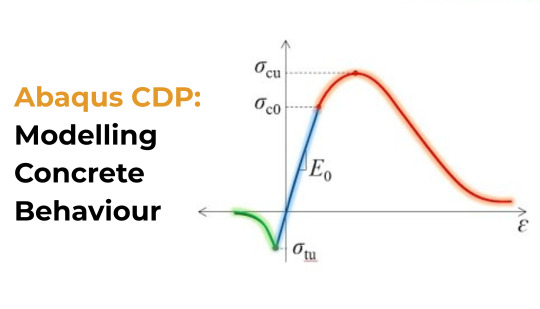
Concrete structures react differently to static and dynamic loads. For safety-critical applications, their response must be properly predicted under high strain rates of aircraft impact, blast, or earthquakes. One of the best ways to do this is by employing the Abaqus Concrete Damage Plasticity (CDP) model. The material model is widely used in Abaqus structural analyses to simulate the inelastic and damage response of concrete under a broad spectrum of loading conditions.
0 notes
Text
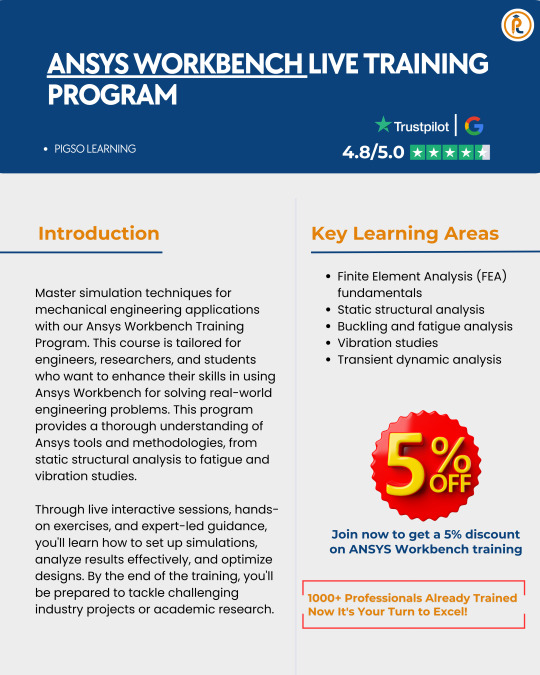

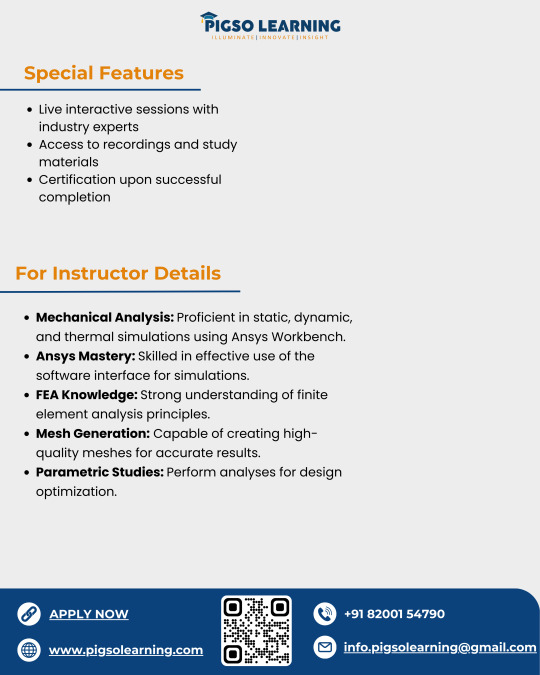

𝐑𝐞𝐠𝐢𝐬𝐭𝐞𝐫 𝐍𝐨𝐰: https://pigsolearning.com/ansys-workbench-software...
Are you ready to elevate your simulation skills and tackle real-world engineering challenges? Join our Ansys Workbench Training Program—a comprehensive course designed for mechanical engineers, researchers, and students.
1. Geometry creation using SpaceClaim
2. Material assignment and meshing techniques
3. Modal vibration analysis & fatigue life prediction
4. Transient dynamic analysis
0 notes
Text

Numerical Analysis of Rectangular Footing Bearing Capacity Using PLAXIS Software Training
This study examines the bearing capacity of a rectangular footing using PLAXIS, an FEM-based geotechnical software. PLAXIS 2D and 3D were compared, with 3D providing more accurate results. The Mohr-Coulomb model was used for soil, and a linear-elastic model for the footing. Incremental loading and failure analysis were conducted. PLAXIS training helps engineers master numerical modeling. Courses like PLAXIS 2D/3D Training and Understanding PLAXIS Software enhance expertise in geotechnical analysis.
0 notes